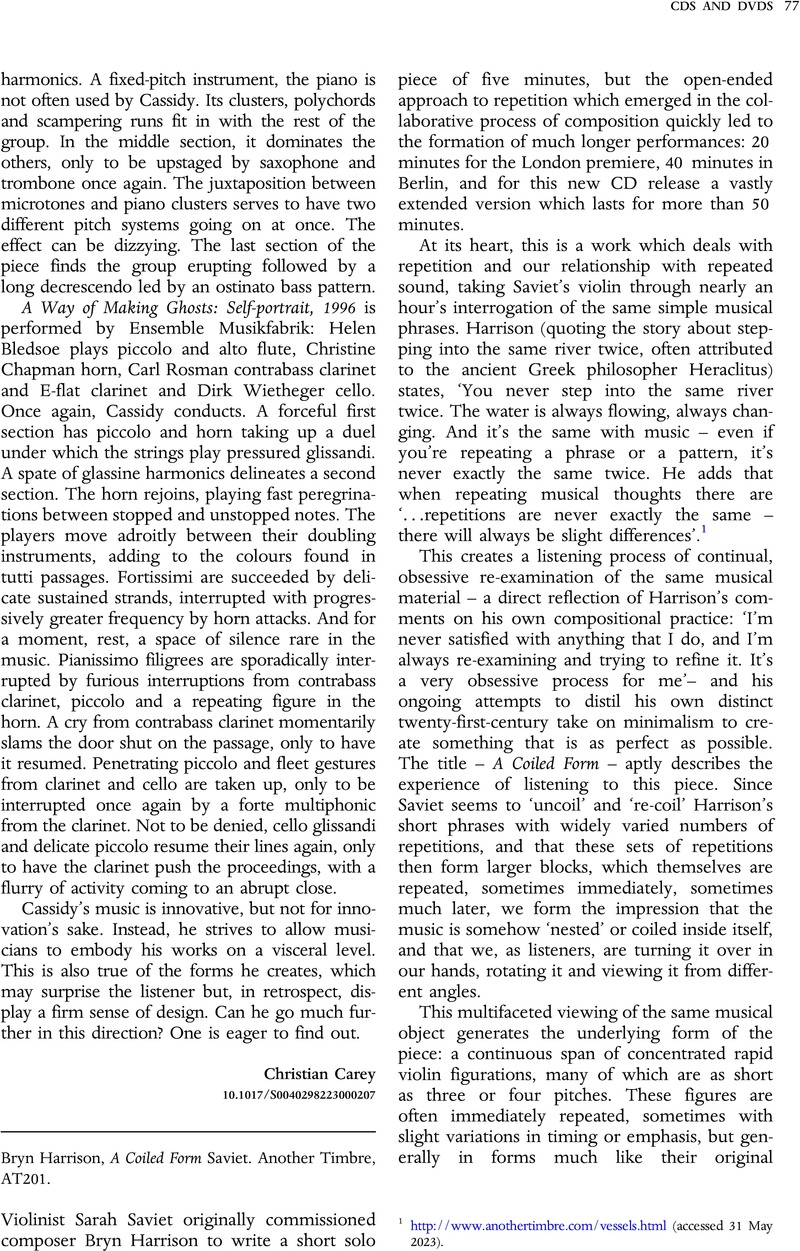No CrossRef data available.
Article contents
Bryn Harrison - Bryn Harrison, A Coiled Form Saviet. Another Timbre, AT201.
Review products
Bryn Harrison, A Coiled Form Saviet. Another Timbre, AT201.
Published online by Cambridge University Press: 12 July 2023
Abstract
An abstract is not available for this content so a preview has been provided. Please use the Get access link above for information on how to access this content.

- Type
- CDs AND DVDs
- Information
- Copyright
- Copyright © The Author(s), 2023. Published by Cambridge University Press
References
1 http://www.anothertimbre.com/vessels.html (accessed 31 May 2023).
2 https://www.james-saunders.com/interview-with-bryn-harrison/ (accessed 31 May 2023).



